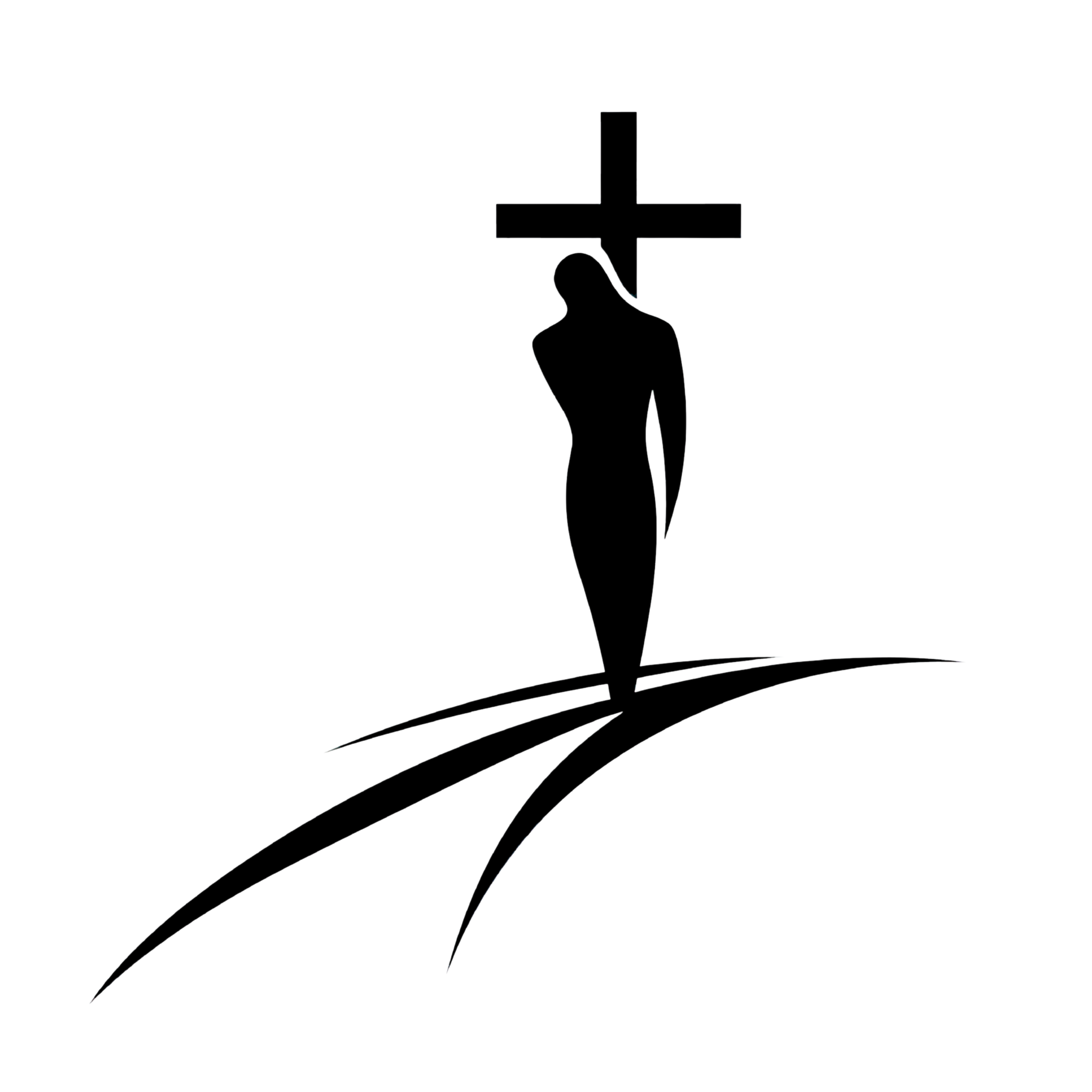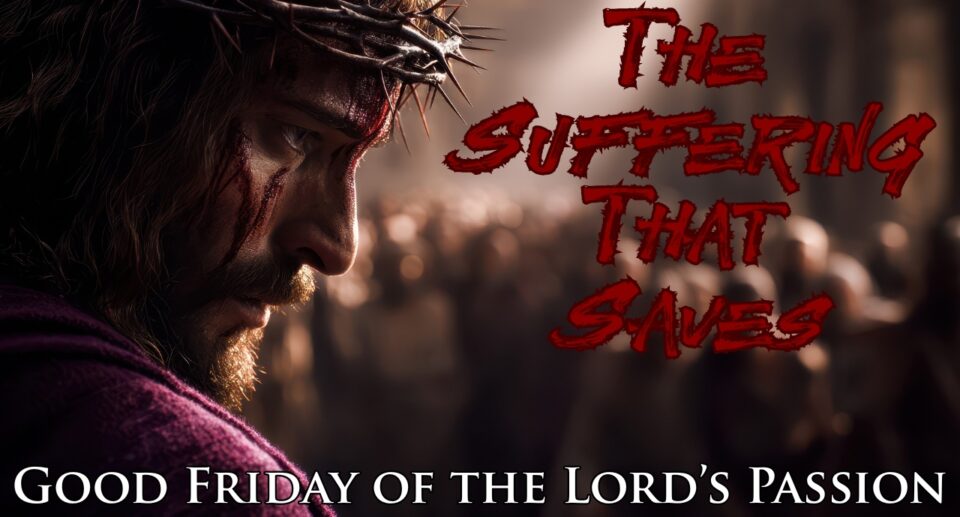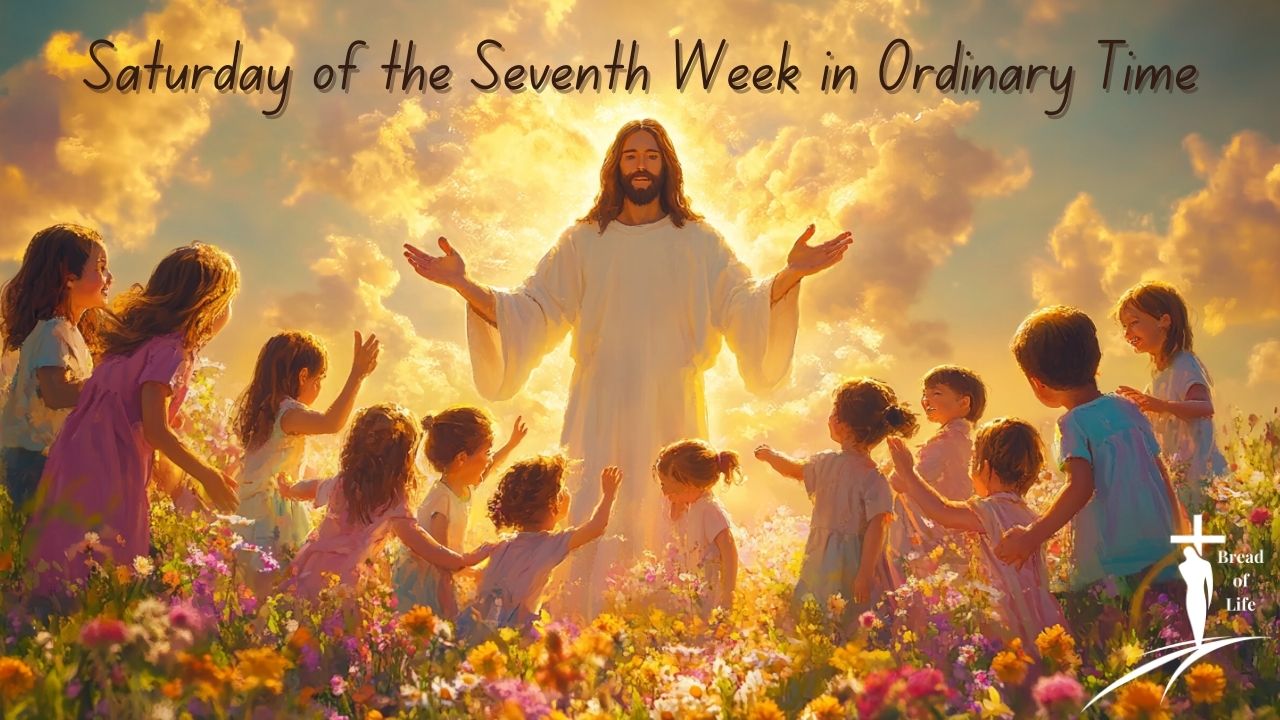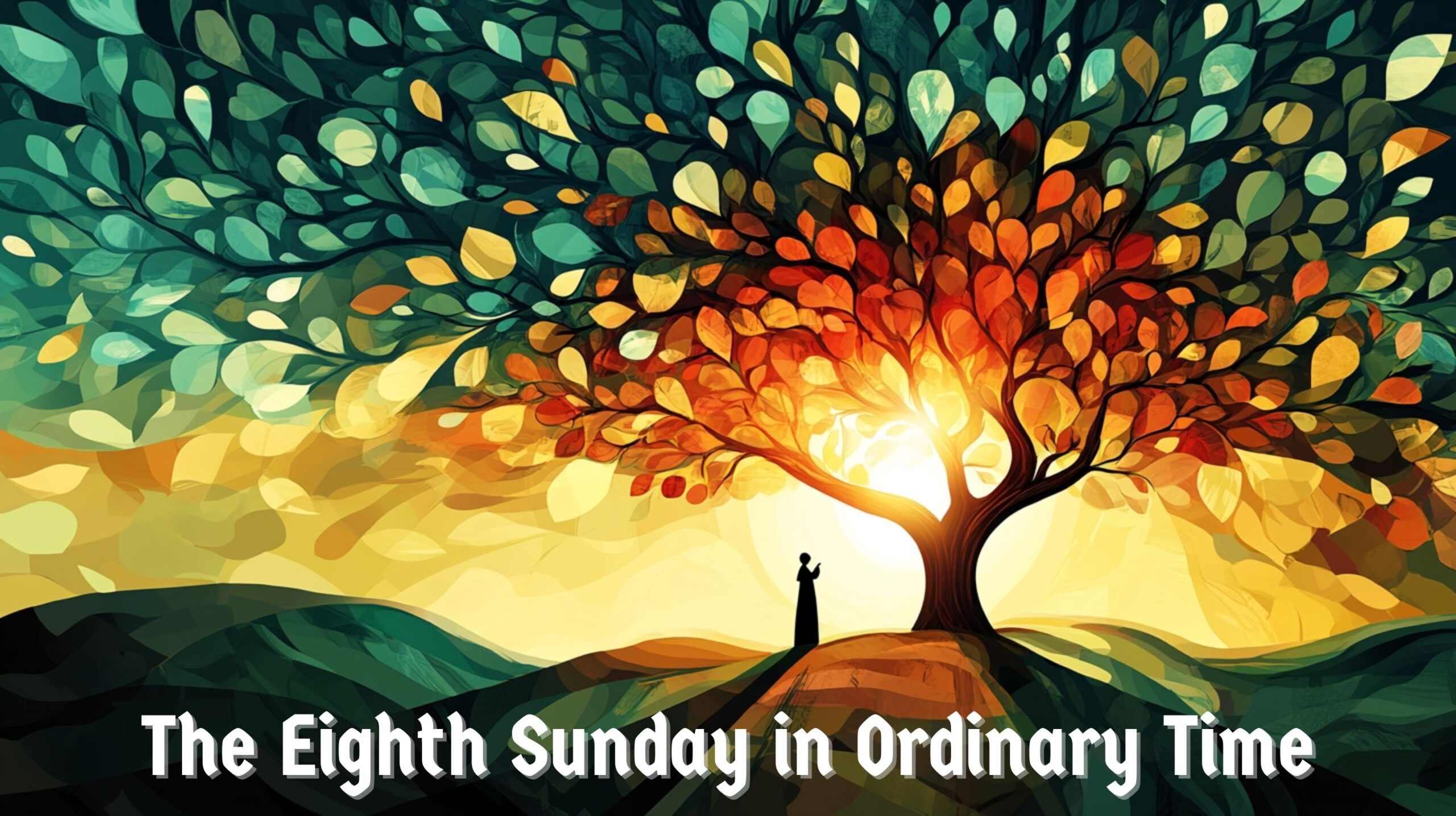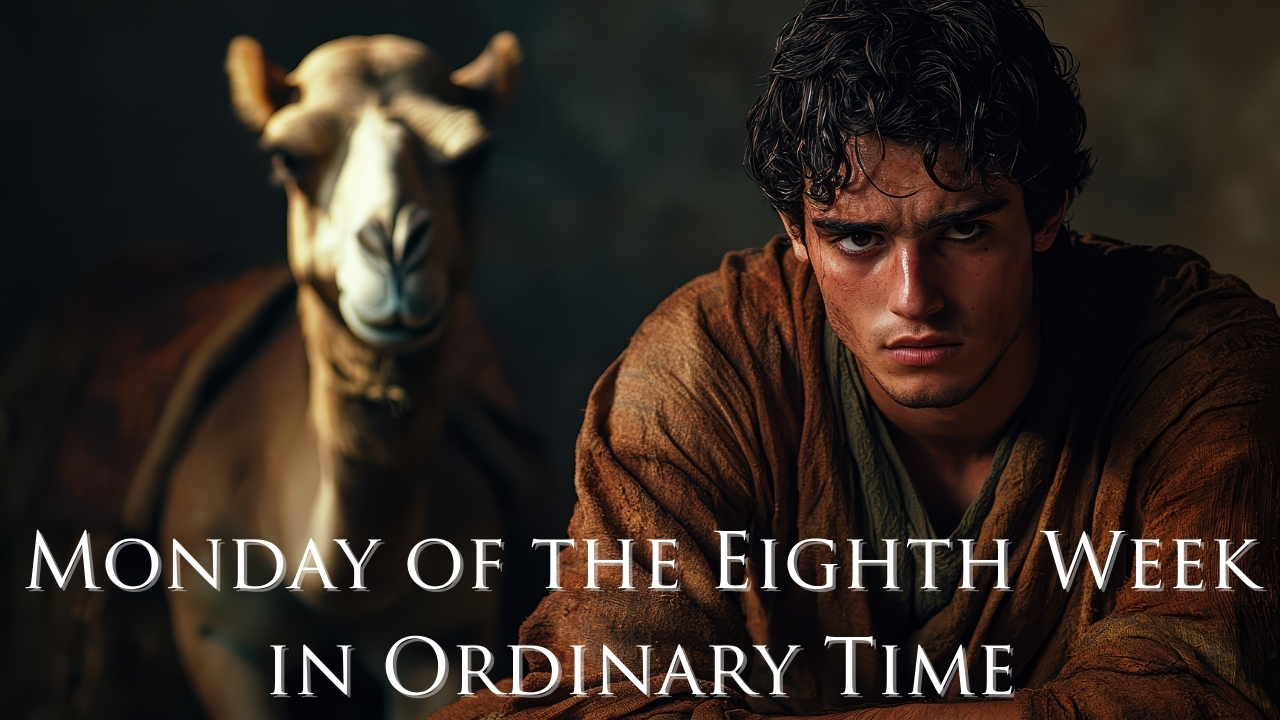From Darkness to Dawn: The Night When Everything Changes | Easter Vigil Readings | April 19, 2025
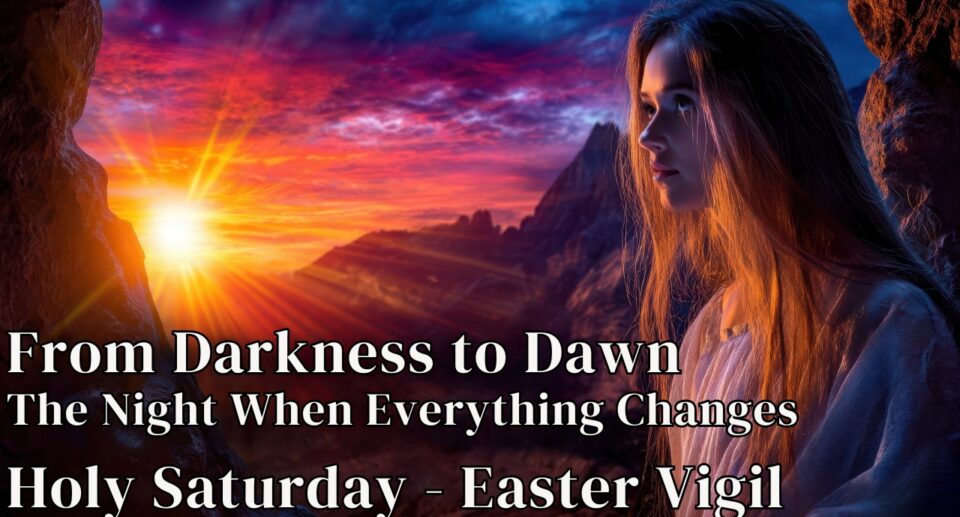
Tonight we participate in the Church’s most ancient and sacred liturgy—the Easter Vigil—where we journey from creation through redemption to resurrection. Beginning in darkness and ending in blazing light, we experience the night when everything changes.
Through this reflection, you’ll discover:
- How the Easter Vigil’s progression from darkness to light reveals creation’s deepest pattern
- Why baptism is our personal participation in Christ’s death and resurrection
- How the women’s journey to the tomb teaches us about expecting endings and finding beginnings
- Where resurrection power touches our lives beyond the Easter celebration
Readings covered: Genesis 1:1—2:2; Genesis 22:1-18; Exodus 14:15—15:1; Isaiah 54:5-14; Isaiah 55:1-11; Baruch 3:9-15, 32-4:4; Ezekiel 36:16-17a, 18-28; Psalm 104; Psalm 16; Exodus 15; Psalm 30; Isaiah 12; Psalm 19; Psalms 42-43; Psalm 118; Romans 6:3-11; Luke 24:1-12
Perfect for deepening your Easter Vigil experience, preparing for baptism or renewal of baptismal promises, or finding hope in life’s darkest moments.
#EasterVigil #Resurrection #PaschalMystery #NewCreation #BaptismalRenewal #HolySaturday #EmptyTomb
From Darkness to Dawn: The Night When Everything Changes
Outside the church, darkness envelops everything. A small fire flickers to life, pushing back the shadows. The priest traces the cross into the paschal candle, marks the Alpha and Omega, and inserts five grains of incense representing Christ’s wounds. Then a single flame from the new fire ignites the candle.
“The Light of Christ,” he proclaims, entering the darkened church. “Thanks be to God,” responds the assembly, as light spreads from person to person, candle to candle.
Tonight, we participate in the most ancient and sacred liturgy of the Church year—the Easter Vigil—where we journey symbolically from creation through redemption to resurrection. We begin in darkness, recalling the primordial void before creation and the tomb where Christ lay buried. We end in blazing light and jubilant song, celebrating the new creation inaugurated by Christ’s resurrection.
This liturgy doesn’t merely commemorate past events but invites us to experience them as present realities that transform us here and now. It’s no accident that those entering the Church receive the sacraments of initiation tonight. This is the night of nights, when death yields to life and darkness surrenders to light.
Our readings trace salvation history’s sweeping arc. We begin at the beginning—Genesis 1—where God speaks into chaos and brings forth order, beauty, and life. “God looked at everything he had made, and found it very good.” These first creative words set the pattern that will repeat throughout history: God bringing life from emptiness, form from chaos, light from darkness.
Yet human sin disrupts this harmony, requiring a new creation more wondrous than the first. Throughout salvation history, God repeatedly intervenes to restore what is broken. We hear of Noah’s salvation through the flood waters, Abraham’s faithful response to divine calling, Israel’s deliverance through the Red Sea, the prophets’ promises of restoration, and God’s pledge to cleanse and renew his people.
Each reading points toward tonight’s culmination, when the new creation dawns in Christ’s resurrection. As our psalm proclaims, “Lord, send out your Spirit, and renew the face of the earth.” Creation itself stands poised for transformation.
Paul’s letter to the Romans reveals how we participate in this cosmic renewal through baptism: “We were indeed buried with him through baptism into death, so that, just as Christ was raised from the dead by the glory of the Father, we too might live in newness of life.”
Baptism isn’t merely symbolic but ontologically transformative—we actually die with Christ and rise with him. The old creation passes away; the new creation emerges. Paul emphasizes this reality: “You must think of yourselves as dead to sin and living for God in Christ Jesus.”
Then we arrive at Luke’s resurrection account. Women come expecting to anoint a corpse but find the stone rolled away and the tomb empty. Two dazzling messengers ask the question that still reverberates today: “Why do you seek the living one among the dead? He is not here, but he has been raised.”
The disciples initially dismiss their testimony as “nonsense,” yet Peter runs to the tomb, sees the burial cloths, and returns “amazed at what had happened.” This mix of confusion, disbelief, and wonder captures the resurrection’s explosive impact—an event so unprecedented it challenges human comprehension.
The women came bearing spices, prepared for death’s finality. Instead, they become the first evangelists of life’s triumph. They expected to preserve a body; instead, they proclaim a living presence. They sought closure; instead, they discover radical new beginning.
This narrative pattern—expected ending transformed into unexpected beginning—encapsulates the Easter mystery. What seemed conclusive (death) becomes merely transitional. What appeared final (the sealed tomb) becomes merely preparatory. The end becomes the beginning.
Tonight’s liturgy enacts this pattern not just through Scripture but through sacrament. Water, once the element of death in Noah’s flood, becomes in baptism the womb of new life. Fire, once the sign of judgment, becomes the illumination of the resurrection. Bread and wine, fruits of the earth that must be crushed and broken, become Christ’s living presence.
Even the structure of our liturgical year reflects this truth. Lent’s forty days of penance culminate not in Good Friday’s darkness but in Easter’s unending light. Indeed, the Easter season stretches fifty days—longer than Lent—as if to emphasize that joy ultimately surpasses sorrow, life overwhelms death.
What does all this mean for us today?
First, Easter confronts us with hope’s radical persistence. Despite overwhelming evidence of death, destruction, and evil in our world, the resurrection proclaims that these forces, however powerful, are penultimate. Life gets the final word. The empty tomb stands as creation’s turning point—the moment when death’s seeming finality was revealed as merely transitional.
This isn’t facile optimism but hard-won hope forged through suffering. The risen Christ still bears his wounds; they’re transformed but not erased. Similarly, Christian hope doesn’t deny life’s genuine tragedies but insists they’re not the end of the story.
Second, tonight reminds us that transformation often begins in darkness. The women discovered the empty tomb “at daybreak”—that liminal moment between night and day. The paschal candle first illuminates a darkened church. Seeds germinate underground before pushing toward sunlight. Christ spent three days in the tomb before resurrection.
Our lives reflect this pattern. Often our most significant growth emerges from periods of confusion, loss, or apparent failure. What seems like ending becomes beginning. The pascal mystery teaches us to trust these dark thresholds as potential birthplaces of new life.
Third, resurrection doesn’t merely return us to previous existence but propels us into new creation. The risen Christ isn’t merely resuscitated but transformed. God doesn’t simply restore what was lost in Eden but establishes something far more wondrous. As the Exsultet proclaims, “O truly necessary sin of Adam, destroyed completely by the Death of Christ! O happy fault that earned so great, so glorious a Redeemer!”
This reveals God’s redemptive pattern: not just restoring what was broken but transforming it into something more glorious. The Japanese art of kintsugi repairs broken pottery with gold, creating something more beautiful than the original. Similarly, divine redemption doesn’t merely mend creation’s fractures but transforms them into sites of extraordinary beauty.
Tonight, this transformative power becomes available to us through the sacraments. Those being baptized literally enact the paschal mystery, dying and rising with Christ. Those renewing baptismal promises reaffirm their participation in this mystery. All who receive the Eucharist are nourished by resurrection life.
Easter isn’t something we observe but something we enter. The liturgy invites us not merely to commemorate a past event but to experience its present reality. Christ is risen—not just once, long ago, but continuously in the Church and potentially in each human heart that opens to his transforming presence.
As water is blessed, candles illumine darkness, catechumens are baptized, and alleluias resound after forty days of silence, we don’t just remember resurrection—we participate in it. The ancient becomes present. What happened to Christ happens, analogously, to us.
This participation continues beyond tonight. Having shared in Christ’s death and resurrection through baptism, we’re called to become agents of new creation in our daily lives. As Paul writes elsewhere, “If anyone is in Christ, there is a new creation: everything old has passed away; see, everything has become new!”
Tonight, as darkness yields to dawn, as fire transforms shadows, as water brings forth new Christians, as an apparently defeated faith explodes in alleluias, we witness again creation’s fundamental truth: darkness never has the final word. Death never wins. Love ultimately triumphs.
The tomb is empty. Christ is risen. Everything has changed.
